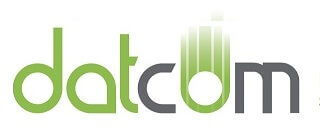You might be surprised to hear how the scope of the Internet of Things has increased over the past few years. These connected devices are all over the place. In order to ensure that your business isn’t affected in a negative way by these IoT devices, you’ll need to consider the many risks and how you will respond to them.
What is an IoT Device?
Essentially, any device that connects directly to the Internet or sends data to and from the Internet through another device is considered an IoT device. A smartwatch that connects to Wi-Fi, or a fitness tracker that shares data fall into this realm. From smart appliances, like Amazon’s Alexa and Google Home, to Internet-connected coffee machines are all Internet of Things devices. While the data they share might not always be extremely sensitive, they could open up other ways for your sensitive data to be reached.
Ask yourself – does this device connect to the Internet or network in some way? If so, it doesn’t mean it is a risk, but it does need attention.
What are You Risking?
When you’re putting together your business’ policies regarding the IoT, you should consider what assets you’re willing to leave vulnerable. It essentially boils down to what you’re willing to let your employees access. If your employees have access to a lot of data, you’re increasing the risk involved with IoT devices in the office. In much the same way, you can control how much data is at risk by limiting which employees can access it. It’s a great way to ensure that the Internet of Things poses a minimal threat to your business and its data.
On the other hand, it’s important to remember that IoT devices will still pose a threat in some way, simply due to the amount of them. There will always be too many factors to take into account to guarantee safety from any and all devices. Therefore, you should consider as many as feasibly possible. The data’s sensitivity is chief among these considerations, as well as the employee’s particular role within your organization. If they are mostly separated from confidential or sensitive data, then perhaps they can use basic IoT capabilities with little consequence. Granted, this assumption varies between industries, so be sure to make it clear what you expect from your staff in your employee handbook.
Train and Prepare Your Staff
Security isn’t something that can only come from one employee–rather, it “takes a village,” so to speak, and everyone must be mindful of security practices. This is incredibly important for the Internet of Things, but everyone needs to be on board–not just management or leadership. All employees need to be aware of the cybersecurity policies used by your company, as well as the various risks associated with the Internet of Things. Plus, it never hurts to be aware of even the most benign warning signs of common security threats.
Lead by Example
If you want your employees to prioritize security for your workplace, start by taking the first steps yourself. After all, you can’t expect your employees to do something that you yourself don’t do. Management should be able to set an example for their workforce, and this is how the IoT is prepared for most effectively.
Is your business utilizing any IoT devices? DatCom, LLC can help your business prepare for this connected technology revolution. To learn more, reach out to us at (903) 320-5330.


